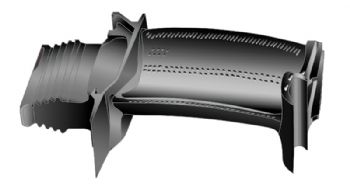
The American Society of Mechanical Engineers (ASME) has designated Pratt & Whitney’s single-crystal turbine blade as a historic mechanical-engineering landmark, recognised for its “progression in mechanical engineering and aviation”. The blade joins more than 260 ASME landmarks around the world.
Dave Carter, senior vice-president (engineering) at Pratt & Whitney, said: “The invention of the single-crystal turbine blade enabled the industry-leading performance of our engines today in terms of efficiency, emissions and time between major overhauls. Having this technology recognised by ASME is a testament to its impact on the aerospace industry.”
The development of these blades began in the 1960s, when Pratt & Whitney (
www.pw.utc.com) engineers Maurice Shank and Frank VerSnyder led the effort to find a new turbine blade with higher levels of strength and heat-resistance.
The original nickel-alloy turbine blades had a metallic crystalline structure with grain boundaries that made the components prone to fracture.
The single-crystal blade eliminated these crystalline boundaries, thereby providing greatly improved resistance to fracture, three-times better corrosion-resistance and nine-times better creep performance than conventionally cast materials.
ASME president Charla Wise said: “The single-crystal turbine blade is a most deserving addition to the ASME roster of mechanical-engineering landmarks.
“We recognise the engineering attributes of the single-crystal blade, as well as the corporate effort of Pratt & Whitney to develop a technology that contributed to the advancement of the gas turbine industry.”
About 8 million single-crystal parts are cast annually for the aerospace industry. The first commercial-aviation use of these blades was in 1980 in the JT9D-7R4 jet engine powering the Boeing 747, McDonnell-Douglas DC-10 and Airbus A300 aircraft.
Their first military use was in 1983 in the P&W TF30 engine used to power the F-111 and F-14 jet fighters, as well as the F100 engine used to power the F-15 and F-16 jet fighters.